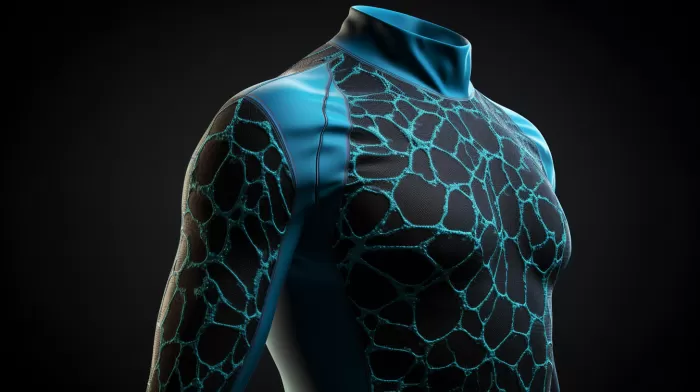When you’re shopping for workout clothes, you might be tempted to choose garments boasting anti-odor or antibacterial properties. Sometimes, these clothes use antimicrobial nanoparticles made from silver. However, there’s growing concern about whether these toxins could be harmful to our bodies.
What’s more, scientists aren’t yet able to say for sure whether these nanoparticles can be released from the clothing when you sweat, potentially resulting in absorption through your skin. So, before you head out to buy that odor-resistant running shirt, let’s dive deeper into the potential risks of toxic clothing – and what you can choose instead.
Antimicrobial Silver – A Potential Health Hazard?
Antimicrobial silver nanoparticles are used in a wide range of products to help reduce bacteria, odor, and the spread of infection. In addition to athletic wear, these particles can also be found in items like medical devices, bedding, and even baby products.
The silver nanoparticles typically measure fewer than 100 nanometers across, which makes them considerably smaller than a human hair’s width (around 80,000 nanometers). This tiny size makes it easier for the particles to penetrate the skin and enter our bodies.
Researchers have begun to wonder if these silver nanoparticles may contribute to health issues. For instance, a study found that the particles could impact human liver cells, causing cell damage and inflammation. Of course, more research is needed, but it’s essential to be cautious about which materials we expose ourselves to when we’re already exposed to numerous toxins in daily life.
How Much Silver Are You Absorbing?
The amount of silver you might absorb from antimicrobial clothing varies depending on the fabric, how often you wear it and sweat in it, and your skin’s individual characteristics. One study suggests that you could absorb as much as three times more silver from clothing as from a silver-containing supplement.
It’s worth noting that silver has been used as a remedy in various forms – like colloidal silver – for centuries. The U.S. Environmental Protection Agency considers silver moderately toxic, but the main issue here is how little we know about the long-term health effects of nanoparticles on our bodies and the environment.
Nanoparticles in the Environment
Another concern with nanoparticle-infused clothing is the potential harm these particles cause in our environment. Every time you wash these garments, tiny particles can be washed down the drain and disperse into the environment, where they can accumulate in water bodies, soil, and plants.
There’s preliminary evidence that silver nanoparticles can harm aquatic life, like fish and algae, by disrupting their cellular function and bioaccumulating in various organisms. Again, more research is needed to uncover the full impact of silver nanoparticles, but we must consider the potential environmental costs when using such materials.
Natural and Safe Alternatives
If you’re looking for odor-resistant workout clothing, there are other safer, more sustainable options to try.
- Merino wool: Merino wool is a natural, renewable, and biodegradable fabric from merino sheep. It boasts excellent moisture-wicking and odor-resistant properties, making it great for athletic wear. Make sure to choose ethically-sourced, mulesing-free merino to ensure animal welfare.
-
Bamboo: Bamboo is another natural fabric that is eco-friendly and offers natural antibacterial and moisture-wicking properties – perfect for exercise gear. It’s soft, breathable, and gentle on sensitive skin.
-
Cotton: Organic cotton is a classic choice that absorbs sweat and allows your skin to breathe. It’s soft, comfortable, and better for the environment than synthetic materials.
In conclusion, the potential health and environmental risks of silver nanoparticles in athletic wear warrant more research. In the meantime, by choosing natural alternatives, you can reduce your exposure to potentially harmful toxins, while still enjoying comfortable, sustainably-produced workout gear.



